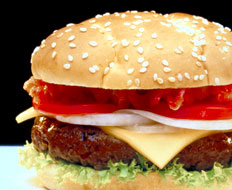My idea of “inclusive exclusivity” started in a boardroom many years ago in Atlantic City, New Jersey. I was making a presentation to a group of executives at the Borgata Hotel, Casino, & Spa to explain how they could import the feel of New York’s hottest nightclubs and restaurants to the Jersey Shore. Although this sounds like a glamorous undertaking, it is time-consuming and complicated. Atlantic City is both geographically and energetically another world from downtown Manhattan, and I was really concerned that our team would not be able to solve this problem.
Luckily, the heavens opened for me that day. Call it divine inspiration or a moment of clarity; whatever happened, the idea of “inclusive exclusivity” popped into my head. There was no need to drive the team crazy trying to get “influencers” from New York to drive three hours to Atlantic City. We needed to run the Borgata’s outlets as other luxury brands had for years.
What we did was create the illusion of exclusivity through a marketing campaign and operational plan that produced an “aspirational experience.” Once the brand and experience were established, perception became the reality. Our job then became a systematic propaganda program for perpetuating the myth with tools like marketing, events, and great service—commodities that are far easier to bottle than the magic dust that make a hot spot hot.
CLOSER LOOK
BOBBY'S BURGER PALACE
WHERE: Washington D.C., New Jersey,Maryland, New York, Ohio, Pennsylvania, Massachusetts
ESTABLISHED: 2008
SIGNATURE ITEMS: 10 Types of Burgers, Salads & Sandwiches, Fries, & Milkshakes
Now, I might like to think this was my Einstein moment, but the truth is that all I did was adapt an idea from the world of fashion. French billionaire Bernard Arnault perfected this model years before. Arnault realized that he could take established luxury brands from the world of fashion, beauty, and luggage with hundreds of years of heritage and leverage their brand across multiple platforms to maximize returns. So he bought Louis Vuitton, Marc Jacobs, and many other fashion staples and used their expensive luggage and couture clothing to maintain the brand while driving the real profit centers like key chains, wallets, and perfumes. The model? Use the top end to build the brand and use the low end to drive the profits—fairly obvious now, but simply genius then. Arnault realized what you might have when you got into quick-service restaurants: The money lies in driving volume sales with a simple product.
The good news is that this model is applicable to all businesses, especially hospitality, and particularly the quick-service segment. In order to understand this phenomenon, look no further than modern-day celebrity chef Bobby Flay.
Flay earned success through his restaurants Mesa Grill and Bolo in New York City, as well as TV spots on the Food Network, and parlayed that good fortune into a personal brand that, to many people, is very aspirational and exclusive. Once that brand was firmly established, he opened licensed restaurants in casino hotels like Borgata, Atlantis, and Caesars Palace.
Then the time came to cash in and complete the trifecta of a modern upscale food brand with his one missing piece: quick service. In this case, it was burgers and buns. Flay opened a fast-casual concept, Bobby’s Burger Palace, in 2008 and now has 10 outlets in multiple states. His brand is exclusive, his restaurants are inclusive, and his cash flow is obtrusive.
Flay is not the only big name getting into quick service. Mario Batali, Jean-Georges, Wolfgang Puck, Rachael Ray, and all the big culinary personalities are laughing their way to the bank on the shoulders of quick-service and fast-casual concepts. Leveraging your brand to sell high-profit merchandise is the quickest way to short-term financial success.
Quick-service concepts that are already experts at driving volume sales can tap into inclusive exclusivity, as well. For example, they can learn from brands like In-N-Out Burger, which has done an excellent job controlling its growth and focusing on quality. The chain has opened pop-up units as far away as Japan with huge lines and massive press coverage, creating exclusive experiences that everyone is welcome to enjoy.
Other brands might consider hyping new products as significant occasions or purposely limiting supply. Do what you do best, but creatively pump up the demand with great out-of-the-box thinking. Inclusive exclusivity is all about creating the air that a product is special, but making it available to everyone who is willing to pay. The emotional connection that comes from obtaining something customers believe is exclusive and special not only increases customer satisfaction, but it also ignites the best marketing tool available: word of mouth.
As the saying goes, in order to sleep with the classes, you need to sell to the masses. Get busy selling now, so you can enjoy sleeping later.








